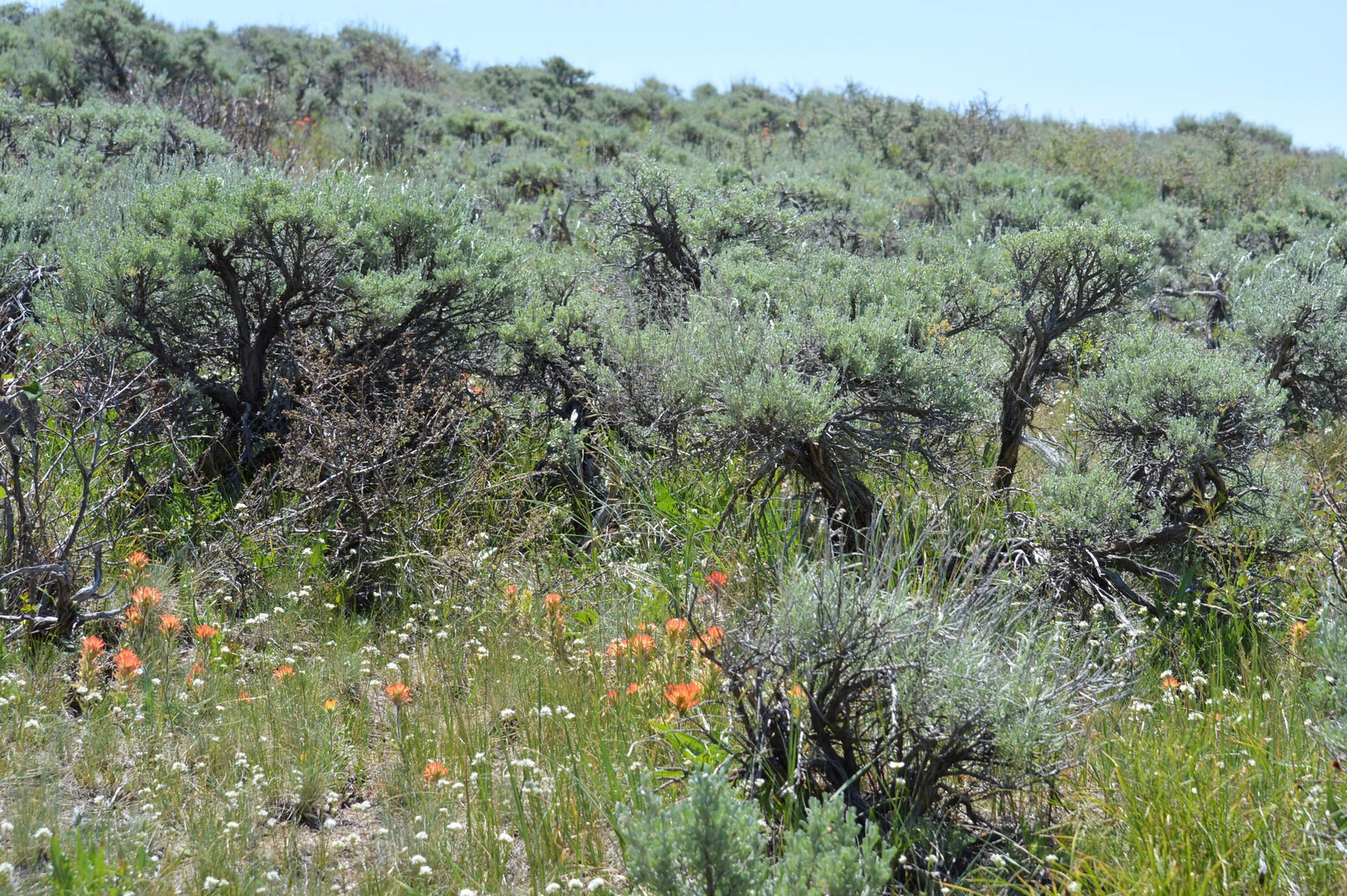
reasonstobecheerful.world
Counting Bugs to Save Birds
Wyoming’s professional pollinator whisperer didn’t always like bugs very much.
He’s a common sight these days among the scrubby plants retaking former oil and gas well pads. But until he was about 20 years old‚ Michael Curran figured — as most people did — that insects were pests. “You’d think of termites and bees‚” he says. “A bee was something that stung you.”
Then‚ when he was an undergraduate student at the University of Delaware‚ Curran took a class taught by a now-famous entomologist that would change the course of his life. He hadn’t intended to enroll. Everything else was full‚ and Behavioral Ecology of Insects ended up being the only option left that would fulfill a requirement for his biology degree.
Large sagebrush plants support diverse plant communities. Credit: Jennifer Strickland / US Fish and Wildlife Service
“I wasn’t happy about being in an insect class‚” he says. “And then it turned out that it was one of the most interesting classes I ever took.” Thanks to that class‚ and to the years he then spent working with that professor‚ Curran came to see insects as the overlooked linchpin of the ecosystems he studied.
Even then‚ he didn’t plan on devoting much of his life to insects. His love of native plants was what led him to enroll in an ecological restoration program at the University of Wyoming in 2010. It was his knowledge of insects‚ however‚ that helped keep him there for a decade as he worked toward his PhD.
Soon after he began his graduate program‚ Curran found himself in the middle of an unfolding crisis. The sagebrush sea‚ a fragile ecosystem stretching from Arizona to Montana and from California to Colorado‚ was disappearing. And the greater sage grouse‚ a chicken-sized bird loosely resembling the turkey collages that young children make around Thanksgiving‚ was on the brink of being added to the endangered species list.
Greater sage grouse at Seedskadee National Wildlife Refuge. Credit: Tom Koerner / USFWS
State officials and private energy companies were scrambling to find a way to reverse the species’ decline without the federal government having to intervene. Aided by researchers‚ they came up with a conservation strategy that hinged on designating core sage grouse habitat and limiting human activity there.
Curran was the one who realized how crucial insects would be in achieving it. A decade later‚ he’s still adding new pieces to the puzzle.
Wyoming is home to more than a third of the world’s surviving greater sage grouse. The imperiled sagebrush ecosystem — the only place where the species is found — stretches across most of the state. It has fared better in Wyoming than in most other places: Nationally‚ an estimated 2‚000 square miles of the iconic landscape have succumbed each year of the past two decades to human incursions‚ invasive species and the ever-intensifying droughts and wildfires brought on by climate change.
But sage grouse populations tend to fluctuate with the health of the ecosystem as a whole‚ and even Wyoming has struggled to improve its sage grouse numbers.










